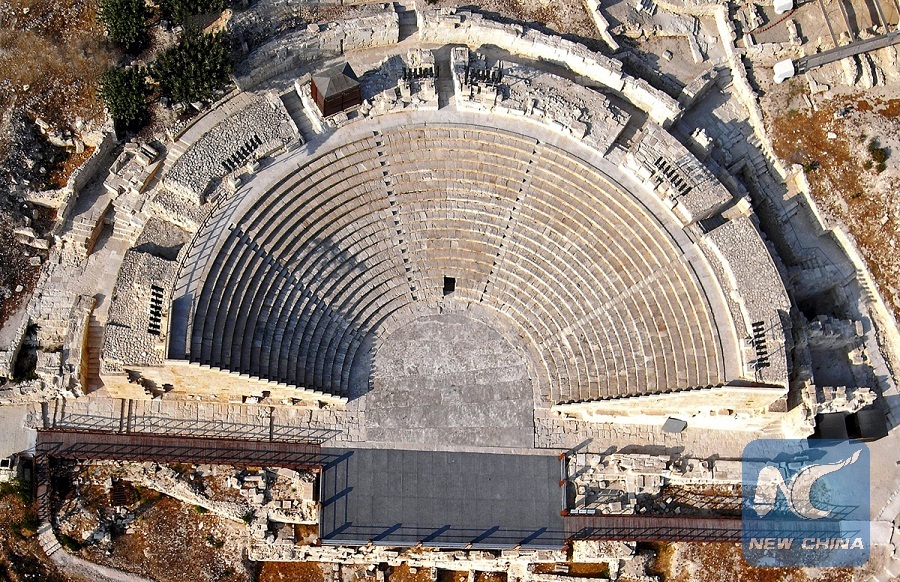
The Kourion theatre is famed to have one of the best acoustics, with whispers on the floor heard at the top sitting line. (Photo courtesy of the Antiquities Department of Cyprus)
NICOSIA, Sept. 22 (Xinhua) -- An ongoing excavation at the ancient Cypriot city of Kourion has provided visible evidence of the magnitude of a 4th century earthquake that caused widespread destruction in several countries of the eastern Mediterranean, an official of the Antiquities Department said on Tuesday.
The quake, believed to have occurred on July 21, 365 A.D., caused considerable damage to Greece, Crete, Asia Minor (Turkey), Egypt and Cyprus, flattening Kourion on the south shore of the island, according to data provided by the Cypriot Geological Survey Department.
This year's excavation at Kourion, carried out by several American universities in association with the Antiquities Department, concentrated on a large collapsed building which has come to be known as the "earthquake house."
"It is believed to have been an elite residence or a public building, containing mosaics and wall paintings," the official said.
"The floor of the building was entirely covered with massive rectangular blocks thrown around by the tremor. The quake power is manifested by the distortion of the walls and the movement of the heavy stones," he said.
Last year's excavations unearthed the remains of five people trying to protect themselves from falling masonry by huddling together.
The building probably had a ground floor and a floor above and was rich in cultural material, providing evidence of a brisk trade with Egypt.
One of the most notable finds is a fragmented glass plate about 60 cm in diameter made of hollow yellow tube fused together in a dark green matrix, similar to plates found in Coptic cemeteries.
"This is probably the best dated example of such plates," said the Antiquities Department official.
Kourion was, at the time, one of the thriving cities of the Roman Empire and boasts a Roman theater on top of a sea cliff, famed to have unmatchable acoustics. It is frequently used for many of the cultural events during the summer-autumn period.
Coins found in the house had been minted before 365 A.D. and ceramics, including a repairable Egyptian amphora, were dated to the middle of the 4th century.
After the devastation of 365 A.D., the residents of Kourion returned to their city in the early 5th century but on a small scale, leaving the ruins of the city intact and entirely undisturbed valuable evidence of the previous era.
Their return coincided with the transformation of Cyprus and its religious transition from worshiping Aphrodite and the other 11 Greek main gods to Christianity. The period after 400 A.D. is considered by historians to be distinctly different from the ancient era and the forerunner of modern Cyprus.

